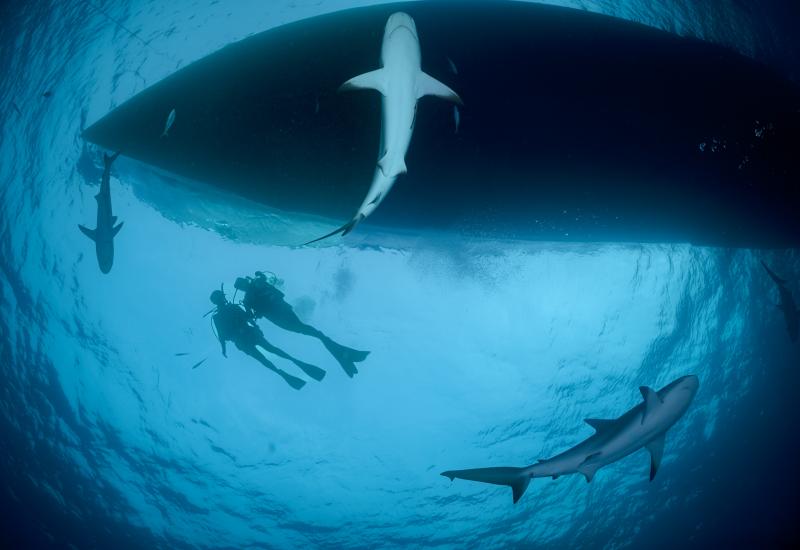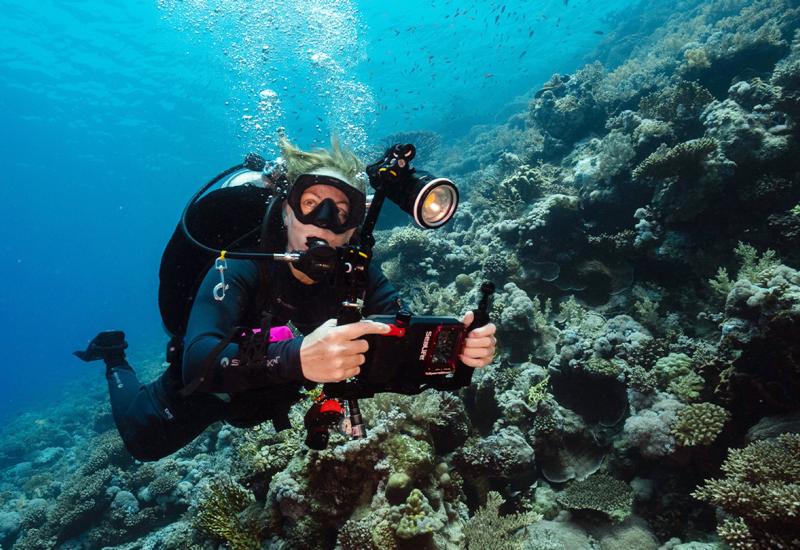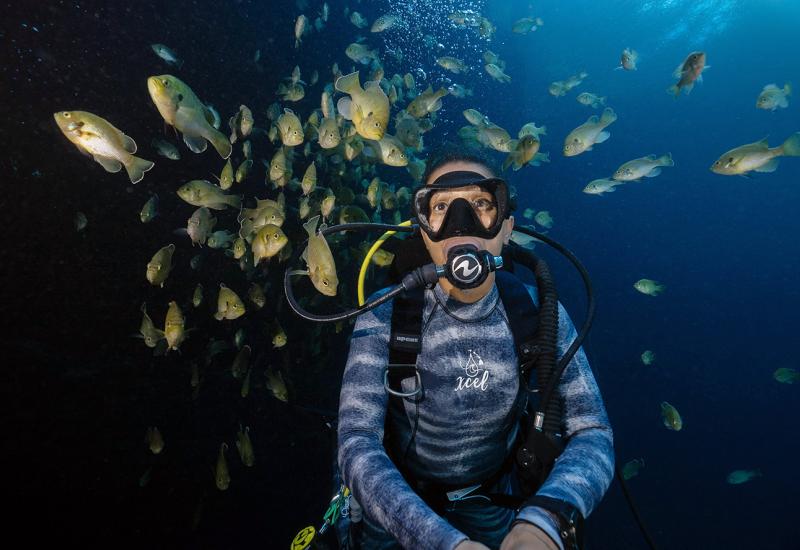ScubaLab’s 2011 Drysuit Tests

Jon Whittle
Why We Test Drysuits
Drysuits are simply the best way to stay warm while immersed in water. And we don’t mean just cold water. Drysuit manufacturers now offer thermal systems for temperate and tropical environments, too, and it seems divers everywhere are embracing the benefits of getting wet while staying dry. For this review, we asked manufacturers to send us previously untested suits to find out what’s state-of-the-art in diving dry. We’ve divided them into two categories: fabric/ shell suits and neoprene suits, though most suits are made from an array of materials.
To see the performance scores for all the drysuits tested, click here: http://ads.bonniercorp.com/scuba/PDF/ScoringChart.pdf
To read "Understanding Valve Flow Rate" and find out why these scores are not included in this year’s test, click on its Related Article link at the bottom of this page.
You need a drysuit if:
• You regularly dive in water colder than 60 to 65 degrees.
• You like to make long-duration or repetitive dives in warm water.
• You like to dive deep.
• Your dives end up getting cut short because a chill sets in before your air runs out.
• You’re a photographer or a marine life buff who moves at a snail’s pace during a dive.
What are the advantages of drysuits versus wetsuits?
With a drysuit you can regulate your comfort level by varying your thermal protection—the colder the water, the thicker the undergarments—or by adding air to the suit. It doesn’t really matter how cold topside temperatures are either, because when you exit the water you’re wearing a dry fleece-type jumpsuit instead of a soppy wetsuit.
Of course, drysuits tend to cost more than your typical wetsuit. They also require additional buoyancy control skills. Then there are the undergarments, and the possibility of revamping your gear inventory to accommodate the special needs of a drysuit. And finally there are additional maintenance responsibilities, but if staying comfortably warm is an issue, this extra investment is worth the effort.
For tips on drysuit maintenance, click on the Related Article link at the bottom of this page titled "Maintaining Your Drysuit."
Types of Drysuits
Drysuits break down into two basic types: shell suits and neoprene suits, each with their own subsets.
Shell suits come in two varieties, fabric (sometimes referred to as “membrane”) and vulcanized rubber. Fabric drysuits are either bilaminates—exterior nylon weaves with the inner side either coated with or laminated to some sort of waterproofing urethane, or trilaminates—waterproof butyl rubber sandwiched between layers of nylon. Fabric suits are lightweight, they have no inherent buoyancy, they don’t compress at depth, they dry quickly and fold compactly for transport. Fabric suits are designed solely to keep water out, however. The insulation that keeps you warm comes from what you wear beneath the suit. In order to provide a full range of motion, fabric suits require a looser fit. While some lower-end fabric suits can be bulky as a result, top-end fabric suits are often designed with special telescoping torsos or expandable gussets that ensure range of motion while maintaining a relatively streamlined fit.
Vulcanized rubber shell suits have more stretch than fabric suits. They’re very simple to make and easy to repair, but they tend to be on the heavy side and a bit pricey. Like fabric shell suits, vulcanized rubber shell suits don’t offer any inherent thermal properties. Their job is to keep water out. It’s the undergarments that provide all the insulation.
Neoprene suits come in either traditional foam neoprene or some form of compressed neoprene. Traditional foam neoprene dry suits are made from essentially the same material as coldwater wetsuits, (usually 7mm or more) but they seal at the neck, wrists and ankles to keep water away from your skin. Their thermal protection comes primarily from the insulating ability of the neoprene itself. Consequently, most don’t require thermal undergarments, although many manufacturers recommend wearing T-shirts or long underwear for comfort. These suits are high-stretch and tend to fit snug — again, similar to a wetsuit, which minimizes hydro-drag. They are also among the least expensive dry suits. However, traditional foam neoprene dry suits compress at depth which diminishes their thermal properties. Neoprene is also the most buoyant of all dry suit materials and usually requires more ballast weight. And being neoprene, they take forever to dry.
Compressed neoprene is theoretically a traditional 7mm foam neoprene that has been compressed to 2mm to 4mm, thereby creating what is considered by many to be something of a compromise between traditional foam neoprene and shell suits (“hyper-compressed” and “microcell” suits are considered the better varieties of this category due to their smaller cell structure). Performance and fit are more like a wetsuit, extra weight is not needed, the material is very rugged and it’s easy to repair. Compressed neoprene suits benefit somewhat from the inherent thermal properties of the neoprene, although the bulk of their thermal protection comes from undergarments.
Then there’s a specialized neoprene called crushed neoprene. This unique, patented process creates a material that’s even thinner and denser than compressed neoprene, and it’s extremely durable because its cell structure, by way of its unique crushing process, has been completely and permanently flattened without rupturing the cells, and thereby weakening the material. Crushed neoprene is super durable and very high-stretch, so you can get a close fit without sacrificing range of motion.
Both compressed and crush neoprene tend to be pricey. Also, because they are neoprene, they take longer to dry than shell suits, although they dry much faster than traditional foam neoprene dry suits.
To see the Features chart of ScubaLab’s 2011 drysuit review, including the Testers’ Choices and Best Buy suits, click here: http://ads.bonniercorp.com/scuba/PDF/Features.pdf
Critical Drysuit Components
There are numerous critical components to a drysuit. Here are brief descriptions of the most important ones.
Zippers: Drysuits are available in both rear-entry versions, where the zipper is located on the shoulders, and front-entry versions, also referred to as “self-donning,” with the zipper located on the front of the suit, either diagonally across the chest or horizontally just above the waist.
Shoulder zipper suits are often, but not always, less expensive and some divers feel they allow for a better overall range of motion. They’re relatively easy to get in and out of, but you need a buddy to zip them up for you. With front-entry suits you don’t have to rely on anyone to zip you up, but they can actually take a bit more finesse to don and doff (this gets increasingly easier with practice). Bottom line, both are solid designs with their own advantages and disadvantages, so whichever way you decide to zip up ultimately comes down to personal preference.
Seals: While drysuits are fitted with both latex and neoprene seals, latex tends to be the seal material of choice among both fabric and neoprene suit makers. Latex seals come in either cone-shaped or bell-shaped styles. Take your pick. Both do a good job of keeping water out.
Latex Seals: These types of seals are more flexible and stretchy and allow easier entry into the suit. Because the neck seal must go over the head first, divers with relatively small necks (especially women) favor latex seals as they remove less hair and are tender to the nose as you enter and exit the suit. Latex seals may also leak less if you have pronounced gaps in tendons when flexing your wrist. But because they are not as sturdy as neoprene seals, more care needs to be taken when donning. The thickness of latex seals varies; thinner latex is more comfortable but is more susceptible to tearing. All latex seals need to be replaced every year or two, depending on how much you use the suit and how well it’s treated when in storage.
Neoprene Seals: These type of seals have a “skin-in” smooth side that lays against your skin (“skin-out” seals are designed to be folded over so the smooth side still makes contact with your skin). Neoprene seals tend to have a longer life than latex.
Silicone Seals: If you’re allergic to latex, silicone seals are an option for you. It works similarly to latex seals (Waterproof and DUI offer these).
Inflate Valve: To keep a drysuit from collapsing against your body as you descend, you need a method of inserting air. This is done via a low-pressure inflator valve, located on the chest. The inflate valve is push-button activated and connects your regulator’s first stage with it’s own low-pressure inflator hose.
Exhaust Valve: There is also an exhaust valve, usually located on the upper left arm, which allows you to bleed expanding air from the suit when ascending. The exhaust valve is usually a combination manual/automatic. Screw the valve all the way in and its fully manual, requiring you to depress the cap to vent air. Unscrew the valve all the way and it automatically vents air as the pressure inside the suit increases. It can be adjusted anywhere in between to increase or decrease sensitivity to match your particular diving style.
Boots: Drysuit footwear choices range from flimsy latex to rugged vulcanized rubber with thick treads, either attached to or separate from the suit. Boots need to match the type of diving you do. For example, some boots, while adequate for boat decks, are simply not up to the rigors of diving rocky shorelines. Regardless of what boot you choose, plan on purchasing another pair of fins one size larger than the fins you use with your wetsuit booties to accommodate the larger drysuit boot size.
Dry Gloves/Replaceable Seals: One of the most popular advances in drysuit diving is the advent of easy-to-use replaceable seal systems and dry glove systems. Replaceable seals enable you avoid the bane of drysuit diving—a torn latex wrist or neck seal that leaves you stranded on the beach when your buddies get to go diving. It used to be that when a seal tore you had to return the suit to the manufacturer for replacement. Now, with a seal replacement system, you can remove the damaged seal and snap on a new one in no time at all. The same goes with dry glove systems that allow you to switch between wet and dry hands to suit the conditions.
Add-Ons: Buying a new drysuit is not unlike buying a new car. You have your base model, which comes with an inflation hose and boots. Most also throw in zipper lube, and some include suspenders, hoods and carry bags. Beyond that, you have options and upgrades, lots and lots of them. Choose from boot styles to dry gloves to replaceable seal systems. There are also choices in pockets and kneepads, and let’s not forget the myriad choices of undergarments. The process can get a bit complicated, but it’s all great stuff because it enables you to build the perfect drysuit system with everything you might want and need to take your diving experience to the next level.
Undergarments: Drysuit undergarments have become an industry unto itself, and for good reason. Pick the wrong undergarments and you could easily sabotage your entire drysuit system. The choice of undergarment should not only depend on the type of drysuit you wear, but on the type of diving you do, to include water temperature, your at-depth exercise level, and how long you like to stay under water.
What you don’t want to do is spend big bucks on your suit then scrimp on your insulation. Beyond the fact that it’s your undergarment that will determine whether or not you stay warm, oftentimes it’s also your undergarment that determines whether you’re going to able to function efficiently at depth. A high-stretch drysuit and a no-stretch undergarment cancel each other out. The type of undergarment you choose will play a large role in whether you’re warm and cozy, or cold and restricted, regardless of what suit you might be wearing.










